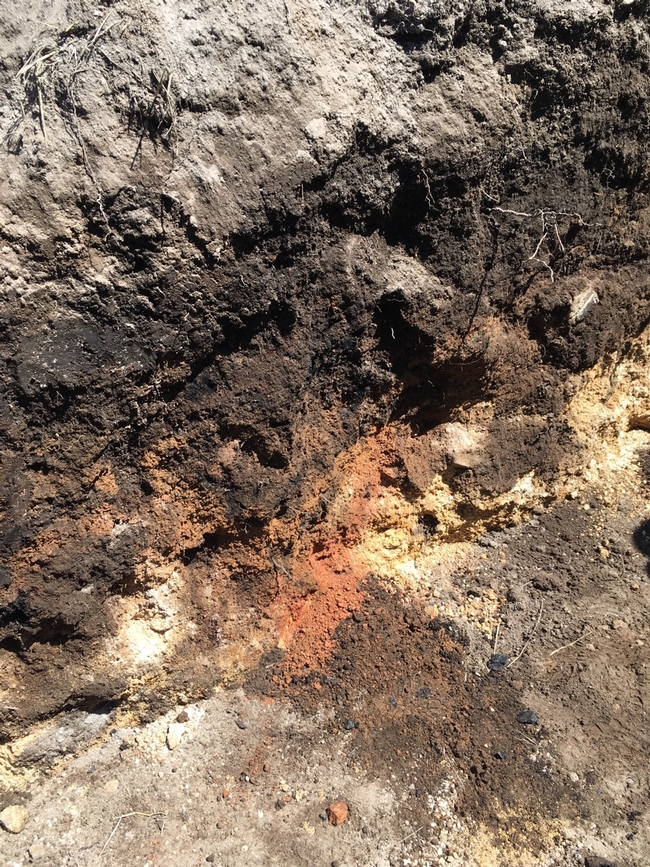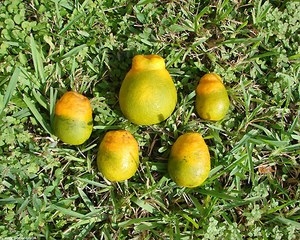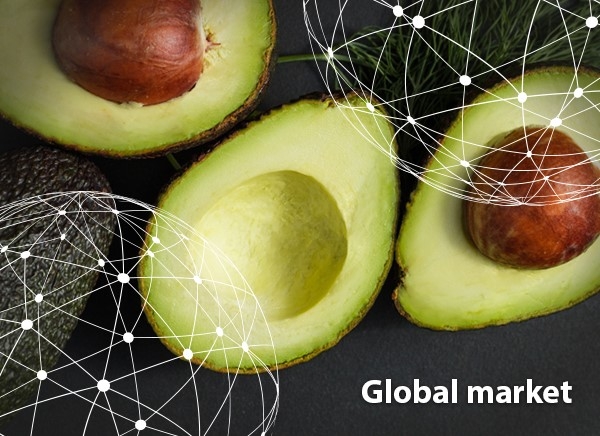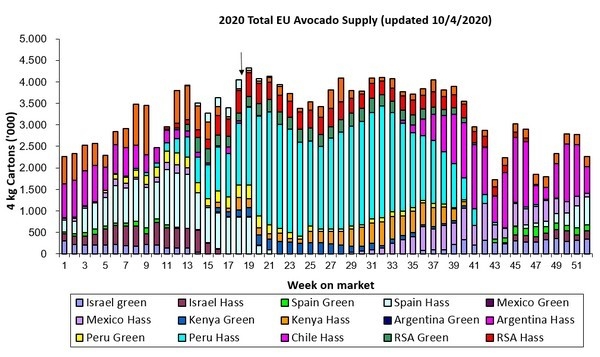- Author: Kristian Salgado
For more information on the CDFA Healthy Soils Program: Click here
Kristian M. Salgado
University California Cooperative Extension- Imperial County
Community Education Specialist 2 (CES2)
Climate Smart Agriculture
(760) 693-8938

- Author: Ben Faber
Citrus greening, also called Huanglongbing (HLB), is devastating the citrus industry. Florida alone has experienced a 50 to 75 percent reduction in citrus production. There are no resistant varieties of citrus available and limited disease control measures.
Some scientists think it is possible that orange juice could one day become as expensive and rare as caviar. In an effort to prevent this, three plant pathologists at the University of California-Berkeley and United States Department of Agriculture conducted research into ways to boost citrus immunity and protect the valuable fruit against citrus greening.
Because the bacteria that causes citrus greening cannot be grown in a lab, scientists have to find novel ways to conduct experiments. The University of California-Berkeley/USDA team looked at many different strains of the bacteria that cause citrus greening to see if they could identify peptides (a compound of two or more amino acids) that would trigger immune responses.
"This was a long list, so we narrowed it down by selecting small peptides that were a bit different in their peptide sequence, which might imply that the bacterium had made those sequence changes so that they wouldn't be recognized by the plant immune system," explained Jennifer D. Lewis, group leader of the research team. "Then we further narrowed that list to peptides from strains that caused disease in citrus."
Through this research, they showed that two peptides could trigger immune responses in multiple plant species, including citrus. These peptides may play a role in preventing or reducing yield loss from citrus greening.
According to Lewis, "We thought it was particularly interesting that some of the peptides predicted to elicit a response, could actually trigger immune responses in multiple plant species. This suggests that the immune response to these peptides is conserved across species."
Ashley Bergman Carlin
acarlin@scisoc.org
651-994-3832
@plantdisease

- Author: Ben Faber
A great source of information on what's happening to produce around the world, including citrus, avocado, blueberries and occasionally cherimoya and star fruit but all things strawberry and lettuce and whatnot, I check daily on Fresh Plaza to see what's going on. Friday, April 17 has an overview of the world avocado industry. Check it out: FreshPlaza.com
OVERVIEW GLOBAL AVOCADO MARKET
Avocado bars may have had to close due to the coronavirus, but the demand for avocados has clearly not dropped. The season in the Northern Hemisphere is coming to an end and the production from countries such as Peru and South Africa is steadily increasing. The productions from Peru and South Africa in particular could clash on the market between weeks 17 and 22/23.
The Netherlands: Good avocado sales; shortage of larger sizes expected in the short term
The coronavirus crisis seems to be driving up the demand for avocados. A Dutch importer says that avocados are among the most sought-after categories, together with citrus and summer fruits. Peru and South Africa are the countries that will be supplying the fruit in the near future, although the importer says that the volumes arriving are still small. "In the short term, I foresee a shortage for the larger sizes. Of course, that can change later in the season, but now the demand for Hass avocados is particularly good. Sales prices range between 12 and 14 Euro (4 kg) for sizes 14-20 and between 11 and 12 Euro for the smaller sizes.
Belgium: Trade going well
Germany: Low demand due to start of German strawberry season
France: The logistics is causing headaches at supermarkets
Spain: High demand will cause season to end earlier
Italy: Shift from Hass to Greenskin avocados
South Africa: Larger volumes this year; formidable competitor for Peru in Europe
Mexico: Higher prices than usual
Colombia: Avocado cultivation continues to expand in the country
United States: California almost had surpluses
California's avocado production is strong this year. Growers have already harvested 21.2 tons, compared to 2.3 tons around the same period last year. This time we can speak of a normal avocado harvest. The avocado industry in the US has been holding its breath for the past two weeks, given the threat of an avocado surplus. The rainfall, which temporarily brought the harvest to a halt, and a decline in Mexico's production over the holidays have prevented an excessive accumulation of stocks.
The demand has shifted to the retail. Not only has the coronavirus played a part in this, but also the large volumes and strong demand early this season. Almost imperceptibly, the avocado market in the United States has undergone a major shift. First, the volumes skyrocketed, but then the situation changed radically due to the closing of food service establishments and the hoarding in supermarkets. It remains to be seen what will happen in the coming weeks, but sales to the food service will be very meager. "I don't know anyone in this business who isn't concerned," says someone from the California Avocado Commission. It is also unclear how prices will develop in the coming weeks. Prices skyrocketed when people started hoarding, but then plummeted again and now seem to be stabilizing somewhat.
China: Avocado market slowly picking up again; imports from Peru and Philippines
Australia and New Zealand: Campaign to promote local production
Publication date: Fri 17 Apr 2020
© FreshPlaza.com

- Author: Ben Faber
The California Avocado industry has a rich history of growing, innovating, changing, and reinventing itself as the needs of the marketplace have changed over time. A report from the Hass Avocado Board, produced by CIRAD – Centre Internationale for Research and Development in France
It has also adapted to the changing population, varying demographics, and the ever-shifting demands on land use in the agricultural space, and how to be the most efficient producers they can be. The current environment is no different, and the industry is once again in transition. The CIRAD team interacted with many stakeholders throughout the state, producers, marketers, handlers, and others important to the supply chain here in CA to find out where the industry is at today, and where it will be going. This report will give you a view into that legacy past, the profitable present, and will try and give you insights to help understand where these industry leaders might take the California avocado into the future – enjoy!
And this is what's happening right now to fruit entering the European Market. It's not CA fruit.
- Author: Ben Faber
Just got a note from Dawn Afman, the District Conservationist at USDA Natural Resources Conservation Service.
She says:
USDA Farm Services Agency is working like heck to help all our producers who are hurting due to markets closing for COVID. Please check out my links below; Send all your clients to FSA in Santa Maria, CA
They should pre-register with them get on the list and just like we did for the fires we'll get them assistance, loans, money, insurance etc. A lot of funding is coming their way, please let them know give them hope when you talk with our local producers. They are also taking applications for emergency loans, that can start right now, they have micro fast loans up to 100K.
Resources for COVID-19 farm losses: Register with Farm Services Agency now! 805 928-9269 x 2. Get on the list for all the congressional programs headed your way!
California Department of Public Health
USDA Farmers.Gov / Coronavirus
Farmers Tax Guide
https://www.irs.gov/forms-pubs/about-publication-225
Publication 225 explains how the federal tax laws apply to farming. This publication explains how the federal tax laws apply to farming. Use this publication as a guide to figure your taxes and complete your farm tax return.
Interested in signing EQIP documents digitally? Sign up for Conservation Client Gateway! Visit:
https://www.nrcs.usda.gov/wps/portal/nrcs/main/national/cgate/






